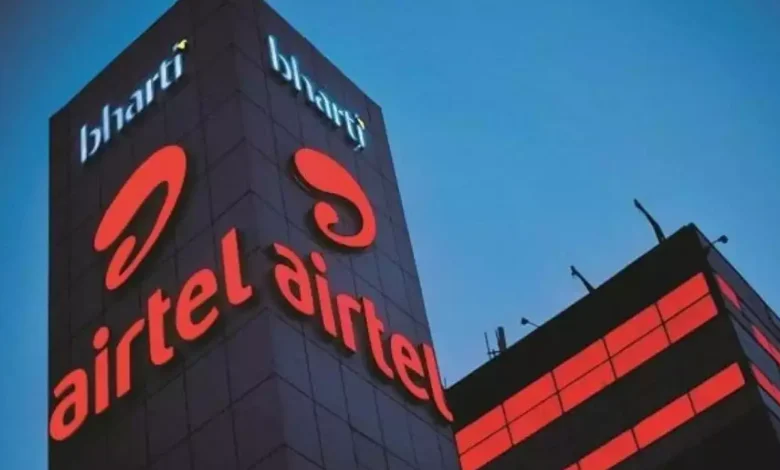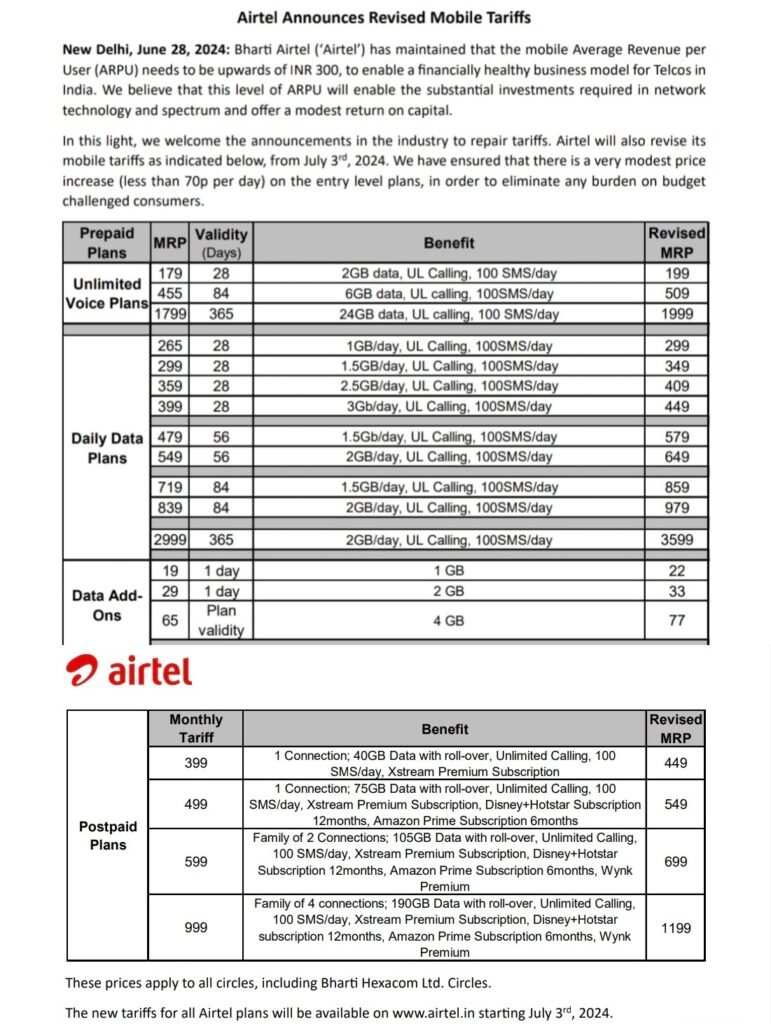
India’s telecom sector is witnessing a significant shift as Bharti Airtel, the country’s second-largest telecom operator, announced a hike in mobile tariffs, following a similar move by Reliance Jio just a day earlier. This blog dives deep into the details of Airtel’s tariff hike, exploring the reasons behind it, potential impacts on consumers, and the broader implications for the Indian telecom market.
Airtel’s Tariff Hike: A Calculated Move?
On June 28th, 2024, Airtel announced an “upliftment” in prepaid mobile tariffs by 11-21%, effective July 3rd, 2024. This comes after Reliance Jio, the leading telecom player, implemented its own tariff hike. Airtel terms this increase as a “modest hike” necessary to improve its Average Revenue Per User (ARPU) and invest in network infrastructure.
Among the unlimited voice plans, Airtel has raised tariffs by around 11%, with rates revised from ₹179 to ₹199, from ₹455 to ₹509, and from ₹1,799 to ₹1,999. In the daily data plan category, the ₹479 plan has been increased to ₹579 (20.8%).

Reasons Behind Airtel’s Tariff Increase:
- Countering Jio’s Move: Analysts believe Airtel’s hike is a strategic response to Jio’s pricing changes. By maintaining a similar price range, Airtel aims to stay competitive and minimize customer churn.
- Boosting ARPU: The telecom industry has been grappling with low ARPUs, impacting operator profitability. Airtel’s hike is intended to increase their revenue per user, enabling them to invest in network upgrades and improve service quality.
- Financing Network Expansion: Airtel is looking to expand its 5G network reach and improve existing 4G infrastructure. The additional revenue generated from the tariff hike can be directed towards these crucial investments.
What to Expect for Consumers:
- Increased Prices: Consumers across prepaid and postpaid segments will see a rise in their mobile bills. The extent of the increase will vary depending on the chosen plan.
- Potential Plan Revamp: Airtel might revise its existing plans to offer different data and calling benefits at the new price points.
- Reassessment of Usage Patterns: The price hike might prompt consumers to re-evaluate their mobile usage patterns and choose plans that better suit their needs.
Impact on the Telecom Market:
- Price Realignment: Airtel’s move suggests a potential price realignment within the telecom sector. Other operators might follow suit, leading to a more standardized pricing structure.
- Focus on Value: The focus might shift towards offering value-added services alongside core connectivity to justify the increased tariffs.
- Consolidation or Innovation?: The tariff hike could lead to further consolidation within the industry or push operators to innovate and offer differentiated services to retain customers.
What This Means for You:
- Compare Plans: Before the new tariffs come into effect, it’s wise to compare existing plans and explore options from different operators to find the most cost-effective solution.
- Consider Usage: Analyze your data consumption and calling habits to choose a plan that aligns with your needs and avoids unnecessary charges.
- Explore Value Packs: Look for plans offering additional benefits like OTT subscriptions or data rollover to potentially offset the price increase.
The Future of Indian Telecom:
The recent tariff hikes by Airtel and Jio signal a potential turning point for the Indian telecom sector. While consumers might face slightly higher bills, these changes could lead to improved network infrastructure, better service quality, and potentially more innovative offerings in the future. It remains to be seen how other operators react and how consumers adapt to this evolving landscape.
Stay tuned for further updates as this story unfolds. We will continue to analyze the impact of these tariff changes on the Indian telecom market.



